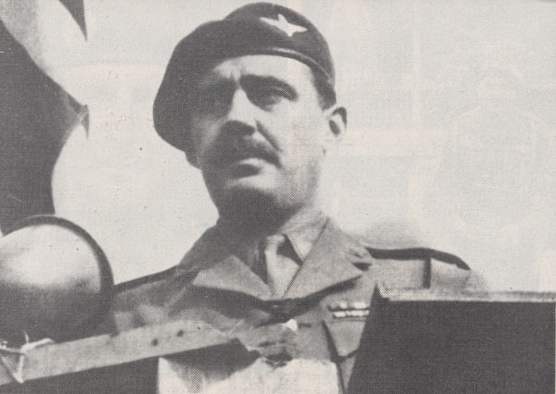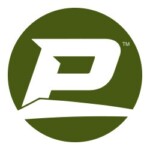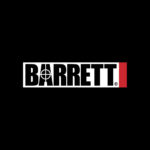Few technologies played as vital a role in World War II as radar. From its famous early days as giant girdered masts dotting the eastern coastline of Great Britain, relaying information on inbound German aircraft, to tiny antennae on fighters seeking out bombers in the dead of night, it proved itself among the supreme innovations of the period. So much so that designers, friend and foe alike, spent endless hours trying to perfect and utilize this invention. All realized a sudden breakthrough carried with it hopes of altering the outcome of battles, and quite possibly the war itself. Therefore it wasn’t surprising that any hint of advancement always received careful attention from an opponent committed either to destroying it, or more likely, stealing it for himself.
Take the case of Germany and Great Britain. Both nations seemed to maintain parity in radar development during the early war years, until one day in late 1941, when a British reconnaissance aircraft flying over the coast of France returned with photographs showing a peculiar dish shaped installation adjacent to a Chateau overlooking the cliffs. It was similar to others seen in prior months, and situated itself near the town of Bruneval. To intelligence analysts there was little doubt that this was the new radar design known as ‘Wurzburg,’ a name decrypted from intercepts and possessing unknown capabilities.
However, scientists who examined the same information came to a different, more ominous conclusion. British bomber losses were increasing at an alarming rate due to night fighters finding their targets with uncanny accuracy. Perhaps the technology these ‘Wurzburg’ stations were giving the Germans pointed to something more than just the ability to detect aircraft or ships in a general area.
The only way to find out for certain was to do what most considered to be the costliest option: send a force in to take a site, dismantle the radar, and bring the most important parts back to Britain for analysis. Quite a tall order for a nation still fighting pretty much alone in the west and bereft of any sustainable ground forces to use in occupied Europe. Still, a proposal was sent to Lord Louis Mountbatten, commander of Combined Operations, who presented it to the Chief of Staff Committee which ran all British military operations. Receiving approval, it was sent back to refine specific wants and needs of the proposal. Obvious to all, the only option was to use a small raiding force to hit with lightning speed and get the results needed before the German war machine rousted and annihilated them.

The natural choice for these types of endeavors remained the commando units. However, due to the formidable defenses around the site, landing men by boat could result in a bloodbath, and allow enough time for the Germans to destroy the radar. So it was determined another unit, the paratroopers, gave the best chance for success.
A plan was drawn up and finalized as Operation Biting – the seizure of the first ‘Wurzburg’ radar.
Bruneval was selected as it was the only unit known to be near a coast. Operation Biting consisted of dropping a small unit at night, behind the coast, and having it penetrate the sites perimeter. Then it would sweep and clear any defenses nearby while capturing the radar intact and, if possible, any technicians knowledgeable about its operation. Once done, the force would move out to the beach and board waiting landing craft for transfer back to Britain.
On January 8, 1942, Mountbatten contacted the British Army’s 1st Airborne division and 38 Wing Royal Air Force, asking them to provide men and material for the raid. Once things fell into place, which it did rapidly, training commenced at once.
C Company, under the command of Major John Frost (later of ‘A Bridge Too Far Fame’), from the 2nd Para battalion, provided the ground element, but problems with 38 Wing, primarily due to inexperience and lack of suitable aircraft, caused them to be replaced early on by the more seasoned 51 Wing under Major Percy Charles Pickard. These two units ran night exercises going over every conceivable scenario and obstacle that might be encountered, with the Paras constantly studying a scale model of the site to look for better ways to approach it. Also, Frost was introduced to Royal Australian Navy Commander F.N. Cook, who would command the evacuation craft along with a unit of No. 12 commando who would come ashore and cover the egress off the beach.
The training continued in different locations until it ended on February 23rd with a final, though disappointing, exercise, leaving the unit little time to fret as the 24th began a four-day window when the 120 men planned to descend, depending on weather, during an optimal phase of the moon. Anything beyond that would result in the mission being scrubbed. So as the hours ticked through the window, a tense group of hardened men waited, ready to move at a moment’s notice.
Already have an account? Sign In
Two ways to continue to read this article.
Subscribe
$1.99
every 4 weeks
- Unlimited access to all articles
- Support independent journalism
- Ad-free reading experience
Subscribe Now
Recurring Monthly. Cancel Anytime.
Mother Nature had other ideas. Clouds and rain caused the mission to be rescheduled each night. Spirits began to fall until the morning of the 27th rolled around. With the window of opportunity now shutting, ideal conditions arrived and the naval flotilla set off in the afternoon. C Company boarded Whitley bombers at RAF Thruxton airfield and rumbled away in the evening twilight.
Frost had divided the company into five sections named after famous British Admirals. ‘Jellico,’ ‘Hardy,’ and ‘Drake’ would assault and capture the site, as well as the chateau where German technicians and their guards were believe to bunk. ‘Nelson’ was to hit defenses on the beach and secure the evacuation site. ‘Rodney’ would act as rearguard, setting up to take on any counterattacks.
As the Whitley’s crossed over the French coast, the peaceful, serene sky began exploding in orange anti-aircraft shellfire. The planes buffeted under the turbulence, jostling the men about. Nothing deterred their focus and few minutes later a crewmember signaled they were approaching the drop zone. A hatch opened in the floor and seconds counted down until the word “Go” was shouted and men tumbled into the blackness.
Little more than a couple minutes later, the first boots hit the ground and the force collected itself before moving toward the target. To their dismay, they discovered some of the ‘Rodney’ element was absent. In fact, it had dropped two miles away, and was led by the company’s youngest officer, a mere twenty years old. He took stock of the situation and immediately led his group out to try and make the show.
The rest of the company spread out and closed in on the chateau unnoticed after an uneventful jaunt, surrounding it. Confident all was in place, Frost yelled “Open Fire,” and automatic weapons and rifles chattered at the chateau, killing a guard who managed to return fire just before it was rushed. Capturing two men, they were surprised to learn that the main force of troops expected was stationed further inland.
Outside, the Paras worked with speedy hands trying to dismantle the radar dish.
Gunfire suddenly erupted from a nearby enclosure as more German guards came to their senses and realized the danger. Both sides settled in for a lengthy gun battle, with several on both sides falling dead or wounded. Parts of the radar were carried towards the beach and more trouble approached in the form of headlights in the distance. Nonetheless, nothing broke each section’s calmness as they started a gradual withdrawal toward the sea.
After assembling on the beach, a lone machine gun nest that escaped ‘Rodney’s’ initial sweep opened fire, wounding a Sergeant Major. Frost led some of his men back toward the chateau, which they found had been reoccupied. Another brief firefight silenced it once and for all. Frost then headed back to the beach and realized the machine gun had been taken out by the lost ‘Rodney’ element, which had arrived in the nick of time to make the evacuation. “The real hero,” Frost later said, “was the officer commanding the section which was dropped away from the bulk of the troops.” The young lieutenant had made his way through unfamiliar surroundings and enemy fire to carry out his task without exemption, resulting in a secured evacuation site.
Once all the sections were on the beach, a single flare was fired to notify the landing craft. After arriving somewhat late, the six boats broached the sand simultaneously, with the commandoes providing covering fire against Germans gathering on the cliffs. The Paras raced their cargo, then themselves aboard and joined in the return fire, as the boats slipped back into the night to rendezvous a few miles offshore. There the men were transferred aboard Motor Torpedo Boats and scurried back to Britain under protection from destroyers and a flight of fighter aircraft.
Frost tallied his losses. Two killed and six wounded among the company, with at least five killed, two wounded and two valuable prisoners snatched from among the enemy.
After being offloaded and rushed to a laboratory, the radar sections were dissected and studied for weaknesses. It was found that the ‘Wurzburg’ complimented the longer-ranged radar system known as ‘Freya,’ enabling night fighters to find their targets quickly and with great precision. ‘Freya’ alone was unable to provide such results, so the ‘Wurzburg’ was brought online to provide the precision.
British technicians took the information learned from the ‘Wurzburg,’ applied it to their own systems, and developed countermeasures to fight it. Chief among these was window, or chaff, simple strips of aluminized paper sized to fool systems to the whereabouts of aircraft or ships. This proved invaluable in the coming months against the city of Hamburg, which burned to the ground because its ‘Wurzburgs’ were blinded and allowed bomber streams to penetrate. Later, and more importantly, it was used to great effect on D-Day, where German screens spotted with thousands of blips and were unable to detect the approaching invasion fleet.
These countermeasures are still in use today.
Frost and C Company received several valor awards, as well as the coveted ‘Battle Honour’ bestowed for its praiseworthy action. It absorbed back into the 1st Airborne, which went on to fight in ‘Operation Market Garden’ in Holland, which at the time became the largest use of paratroopers in history.










